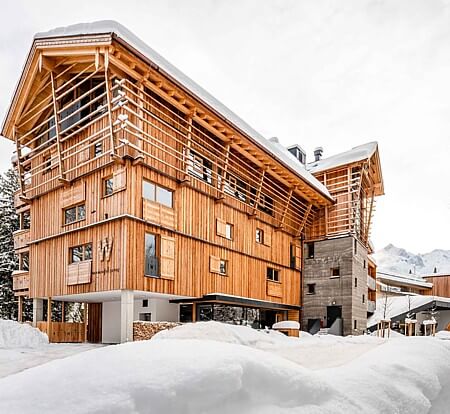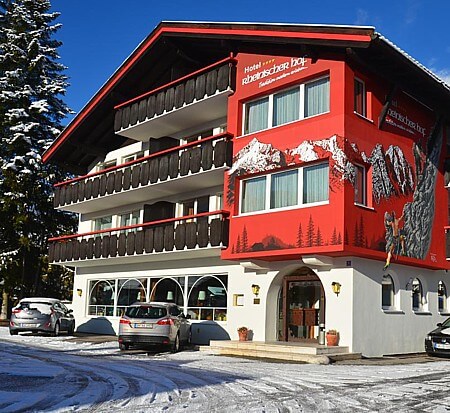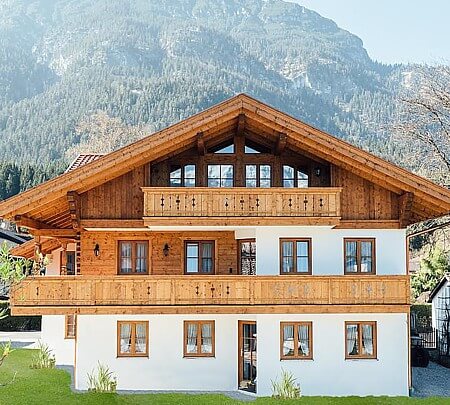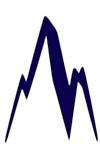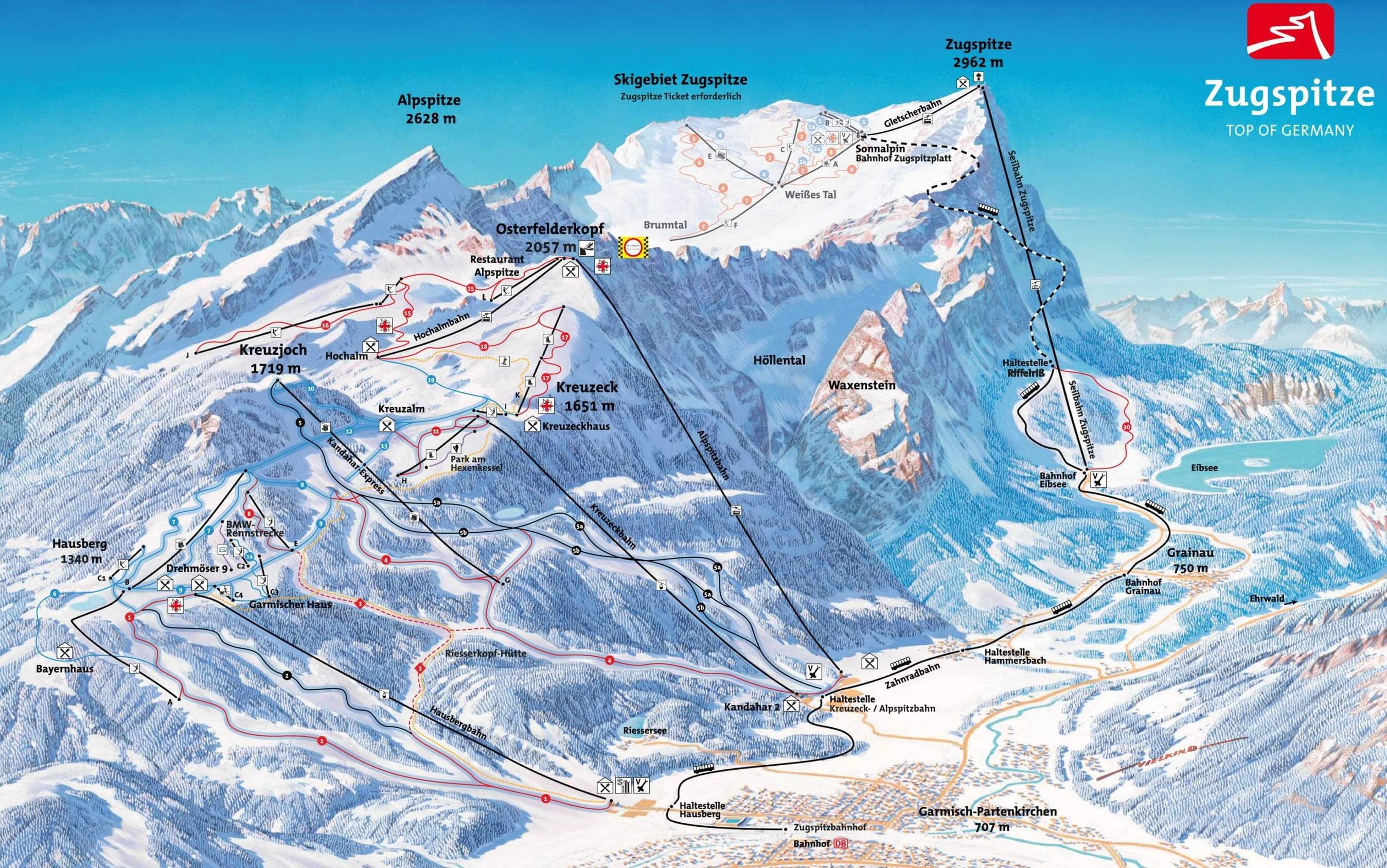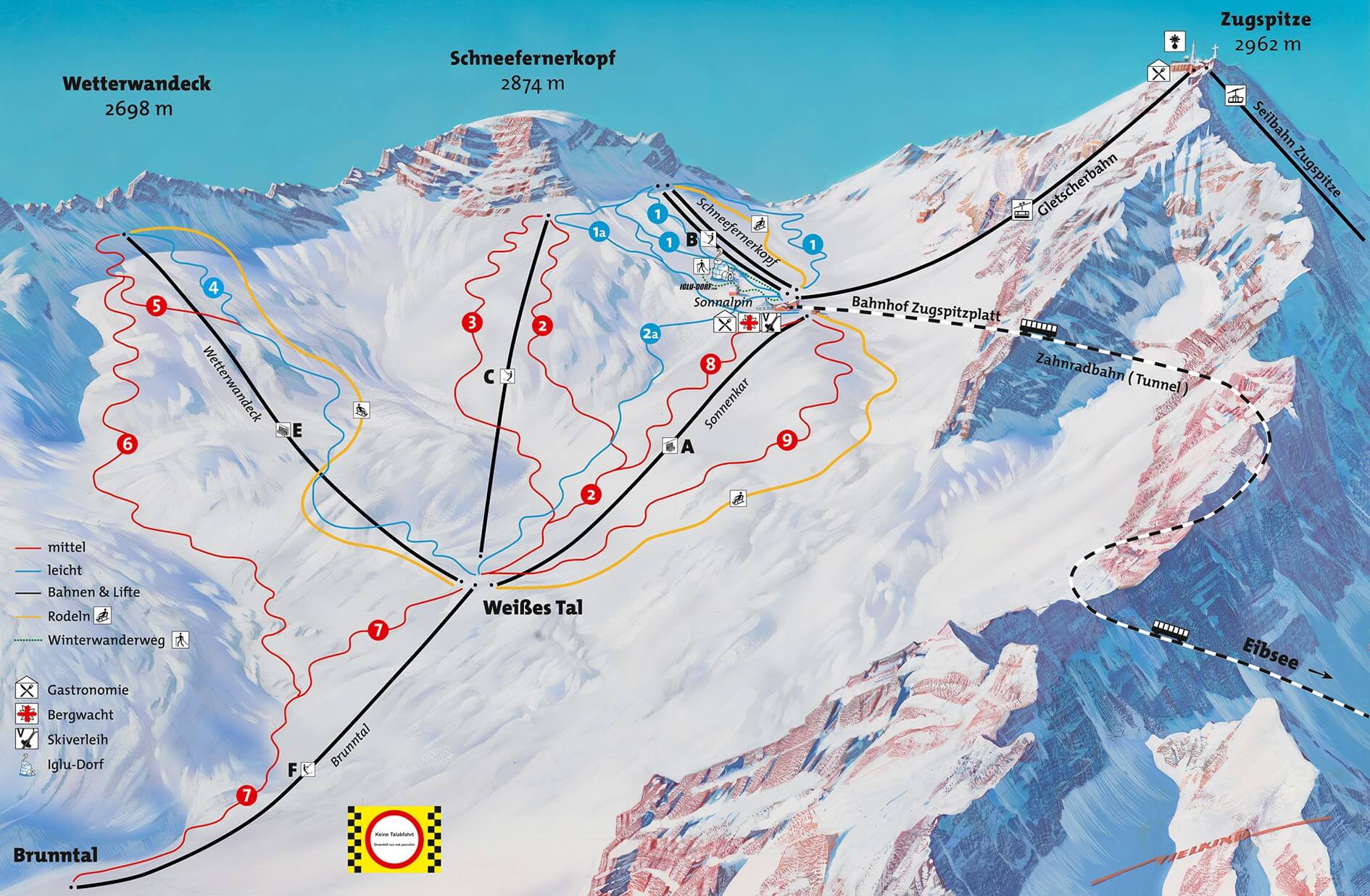So that is what it feels like to have Germany at your feet: At precisely 2,962 metres above sea level, the Zugspitze is the highest mountain in the country and home to three glaciers and Germany’s highest ski resort.
Garmisch-Partenkirchen ski area
By interlinking the three mountains, Hausberg, Kreuzeck and Alpspitze, a diverse ski area encompassing 40 kilometres of pistes and four downhill runs with artificial snow making facilities has been created.
Families and less experienced skiers feel well at home on the predominantly easy to moderate slopes. Young skiers can learn the basics at the “Kinderland” next to the top station of the Hausbergbahn cable car. Challenges for skiers of all abilities can be found just below the Alpspitze Peak on fabulous slopes just above the tree line – against one of the most beautiful backdrops to be found in the northern Alps.
The Zugspitze welcomes winter sports lovers with a ski area of superlatives! Thanks to advantageous altitude levels of between 2,000 and 2,720 metres above sea level, the slopes enjoy a deep covering of natural snow for six months of the year and are drenched in winter sunshine, even when the valley is submerged in a thick blanket of fog.
Families and beginners, experienced carvers and snowboarders alike enjoy the 20 km of perfectly groomed runs in easy to moderate levels of difficulty. Snow conditions permitting, the fabulous Riffelriß downhill run is also open (accessible via cogwheel train / Riffelriß station). Winter fans can also enjoy a spot of tobogganing and first class alpine cuisine on Germany’s highest glacier. Visitors are rewarded with stunning panoramic views from all four mountain restaurants.


